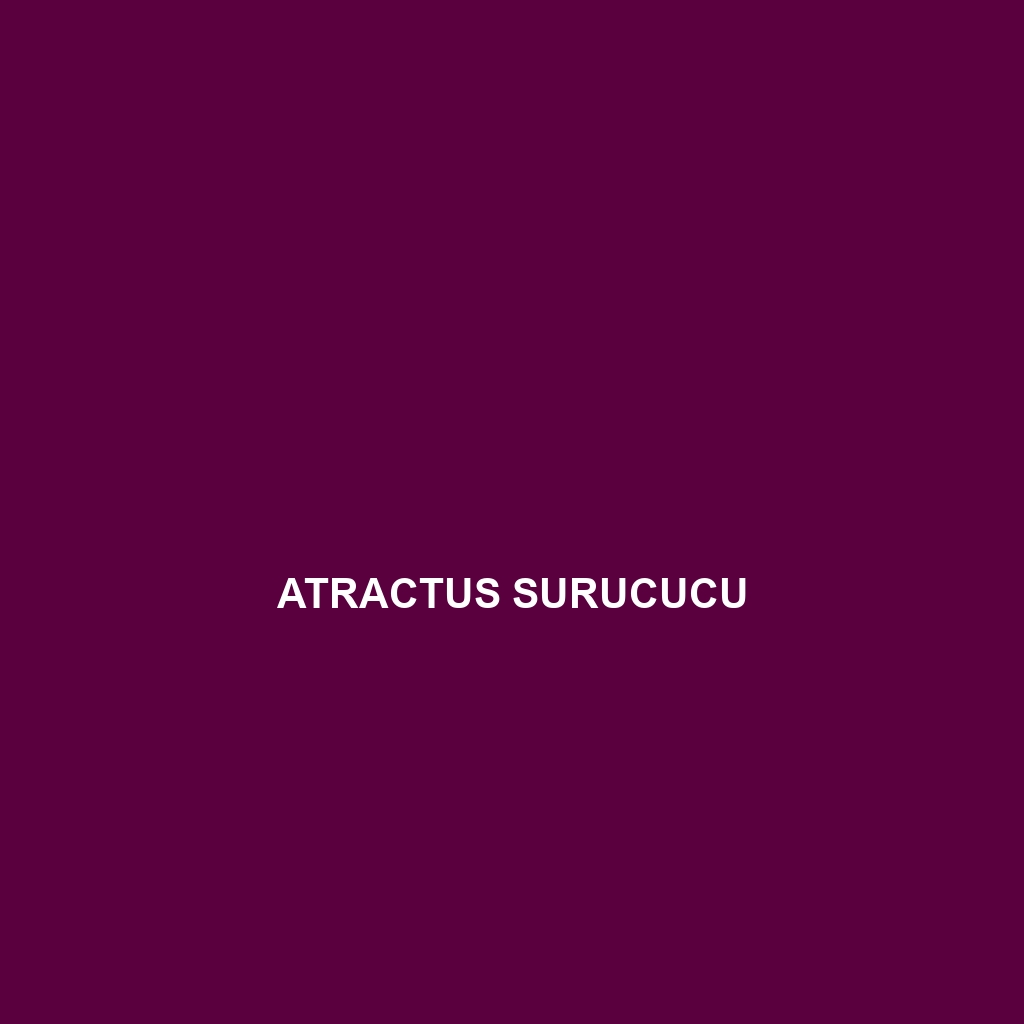Atractus stygius Species Description
Common Name: Atractus stygius
Scientific Name: Atractus stygius
Habitat
Atractus stygius, commonly known as the Stygian snake, is primarily found in the humid tropical regions of Central and South America. Its geographic range includes countries such as Colombia, Ecuador, and parts of Peru. This species thrives in varied environments, including rainforest floors, leaf litter, and occasionally in cultivated lands near forest edges. The preference for moist and sheltered habitats is critical for its survival and reproductive success.
Physical Characteristics
The Stygian snake typically measures between 60 to 110 cm in length. Its body is slender and elongated, featuring a smooth and shiny scale texture. Atractus stygius is characterized by a dark coloration, often appearing as a brownish or black body that can have faint lighter bands or spots, providing effective camouflage against its forest floor habitat. Distinctive features include its small head and relatively large eyes, which enhance its vision in low-light conditions.
Behavior
This species exhibits primarily nocturnal behavior, becoming active during the night when it hunts for prey. Atractus stygius is known for its slow movement and tendency to remain hidden, often burrowing into leaf litter. It displays defensive behaviors such as remaining still to avoid detection or using a “biting” motion when threatened. These behavioral traits often contribute to its elusive reputation in the wild.
Diet
Atractus stygius is a carnivorous snake that primarily feeds on small invertebrates, particularly earthworms and insects. As a proficient hunter, it utilizes its acute sense of smell to detect prey in the damp forest floor environment. Its feeding habits highlight its role in controlling pest populations within its ecosystem.
Reproduction
This species reproduces through ovoviviparity, meaning the female gives birth to live young rather than laying eggs. Breeding typically occurs during the warmer months, with females delivering between 5 to 12 offspring per litter. The young are born fully developed and are independent immediately after birth, showcasing a rapid growth rate and adaptability to their environment.
Conservation Status
The current conservation status of Atractus stygius is classified as “Least Concern” according to the International Union for Conservation of Nature (IUCN). However, habitat loss due to deforestation and agricultural expansion poses ongoing threats to its populations. Continued monitoring is essential to ensure the stability of its habitats.
Interesting Facts
One fascinating aspect of Atractus stygius is its ability to blend into its surroundings, reducing visibility to both predators and prey. Additionally, the Stygian snake is often mistaken for other non-venomous snake species in its range, further emphasizing its effective camouflage.
Role in Ecosystem
Atractus stygius plays a significant role in its ecosystem as both a predator and prey. By preying on small invertebrates, it helps maintain the ecological balance within its habitat. Moreover, it serves as a food source for larger predators, contributing to the food web dynamics of tropical rainforests.
This HTML-formatted description of Atractus stygius incorporates informative sections optimized for search engines while maintaining a professional tone suitable for an educational or informational audience.
